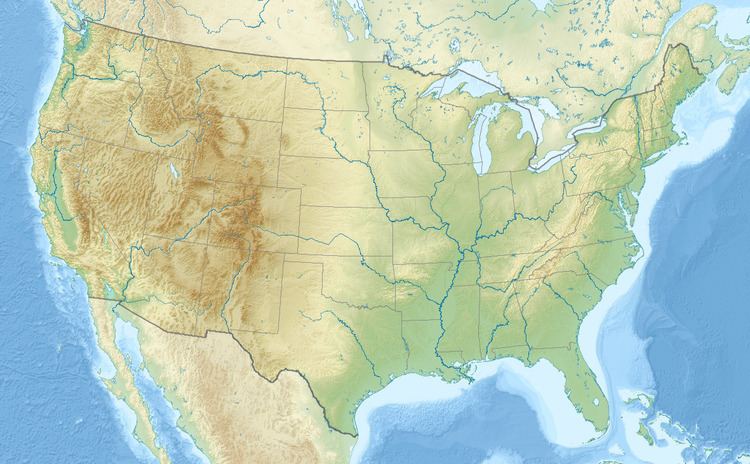Visitors 1,200 (in 2005) Area 81 ha Nearest city Paint Rock | Website Fern Cave NWR Established 1981 | |
 | ||
Governing body U.S. Fish and Wildlife Service Management United States Fish and Wildlife Service Similar Sauta Cave National, Key Cave National Wildlife R, Watercress Darter National, Choctaw National Wildlife R, Eufaula National Wildlife R | ||
Fern Cave National Wildlife Refuge is a 199-acre (0.8 km2) National Wildlife Refuge located in northeastern Alabama, near Paint Rock, Alabama in Jackson County.
Contents
More than 1,200 visitors per year visit the refuge. The facility is unstaffed, but is administered by the Wheeler National Wildlife Refuge in Decatur, Alabama. The cave itself is closed to the public.
TopographyEdit
Most of the Fern Cave NWR is on the western side of Nat Mountain between Scottsboro and Huntsville, Alabama. The Paint Rock River, a tributary of the Tennessee River borders the northwestern side of the refuge. Elevation ranges from the relative flat area around the Paint Rock River valley to a 1,500+ foot elevation at the top of the mountain.
Fern CaveEdit
Fern Cave NWR is named after the profusion of ferns the original explorers found in the Surprise Pit sinkhole. Another entrance used to feature the federally endangered American Hart's-tongue fern (Phyllitis scolopendrium). The fern population has disappeared since 1985 from a high of twenty due to the actions of illegal plant collectors.
Fern Cave itself is described as a "vertical and horizontal maze". There are 12 different levels connected by canyons and pits. The cave is approximately 15 miles (24 km) long and the system is 450 feet (140 m) deep. The cave remains very inaccessible. At least one experienced spelunker has died in the cave.
There are five entrances to the cave although only four of them are within the Fern Cave NWR. The fifth entrance is owned by the Southeastern Cave Conservancy.
WildlifeEdit
Fern Cave serves as a home to the largest colony of federally endangered gray bats in the United States. NWR officials estimate that over 1.5 million gray bats use the cave annually. Biologists with the US Fish and Wildlife Service have confirmed the presence within the cave of the fungus that causes White nose syndrome.
Approximately 200 species of animals use the refuge. Other than the endangered bats, the cave contains cave fish (Typhlichthys subterraneus), cave crayfish, banded sculpins, cave salamanders (Eurycea lucifuga), and northern slimy salamanders (Plethodon glutinosus). Other animals on the refuge include (Cottus carolinae), bluegill (Lepomis macrochirus), yellow bullhead catfish (Ictalurus natalis), . Outside of the cave, white-tailed deer, wild turkeys, squirrels, opossums, raccoons, and rabbits.
FacilitiesEdit
Fern Cave is not open to the public in order to protect the endangered bats which reside within. The remaining portion of the Refuge is open to the public, although its use is limited due to the rugged topography.
Even though the bats leave the cave nightly for food, the refuge recommends against viewing the emergence. The area around the cave entrances is steep and potentially dangerous in the dark. Thus, the park closes around dusk.
Otherwise, there are opportunities for hiking, photography, and wildlife observation at the refuge.
